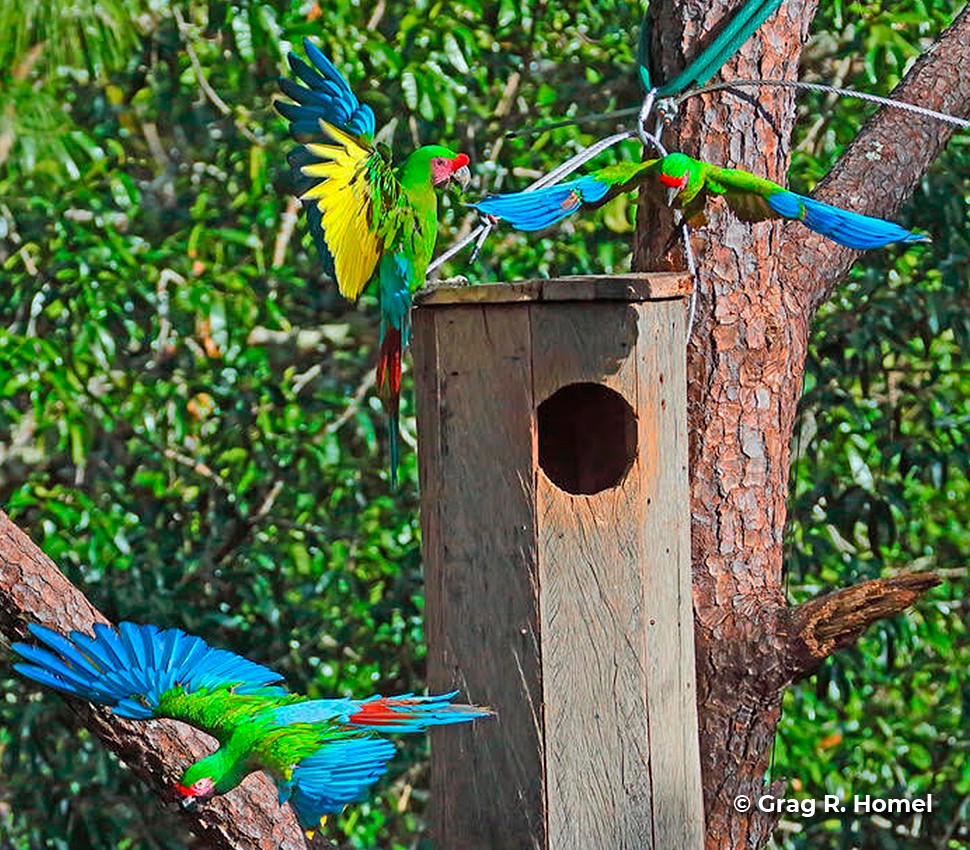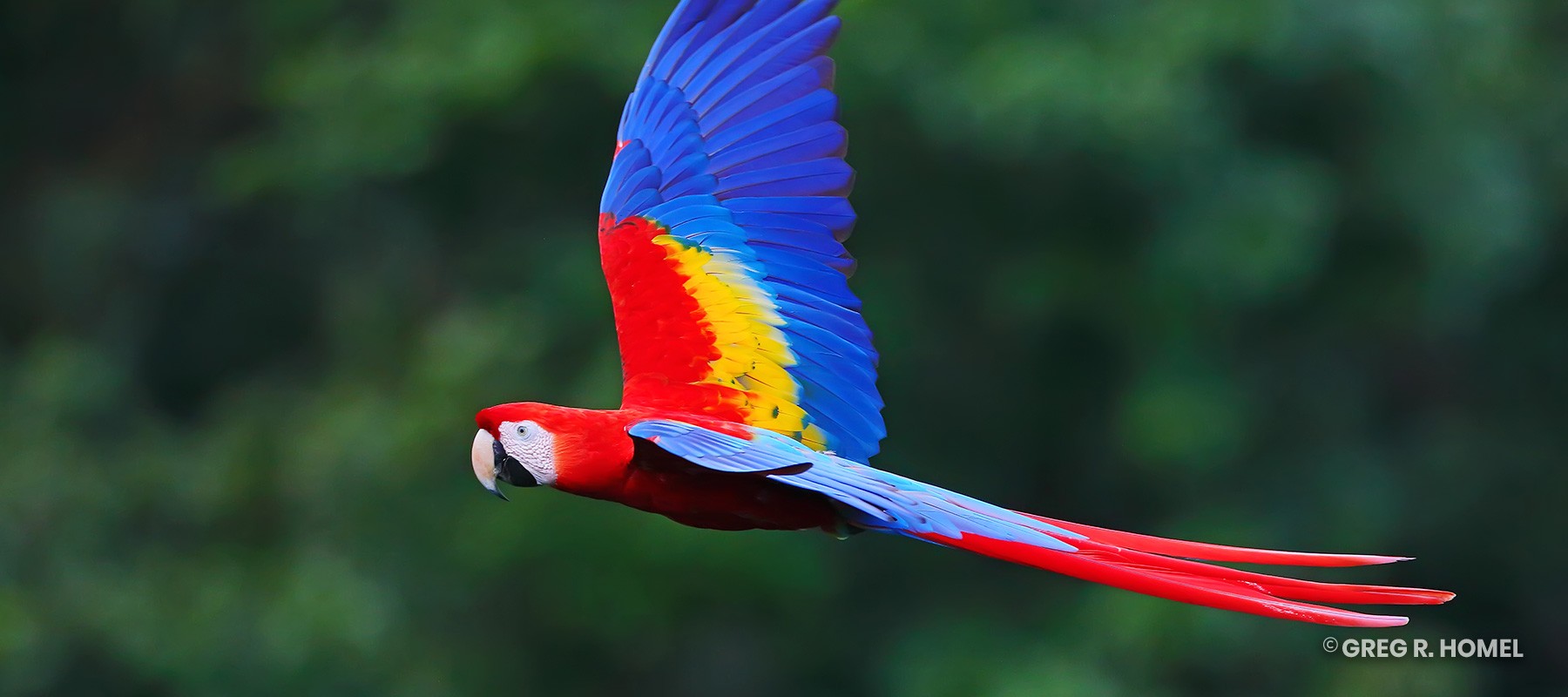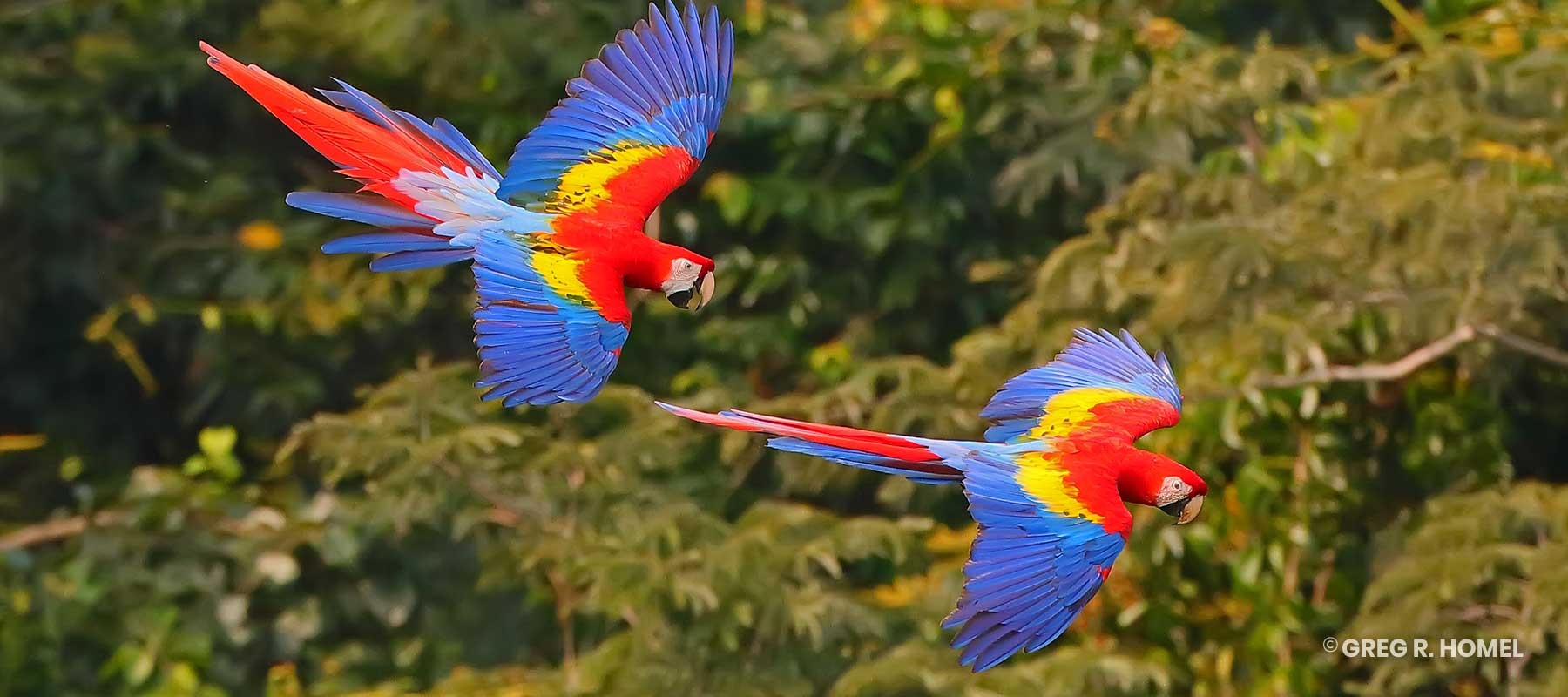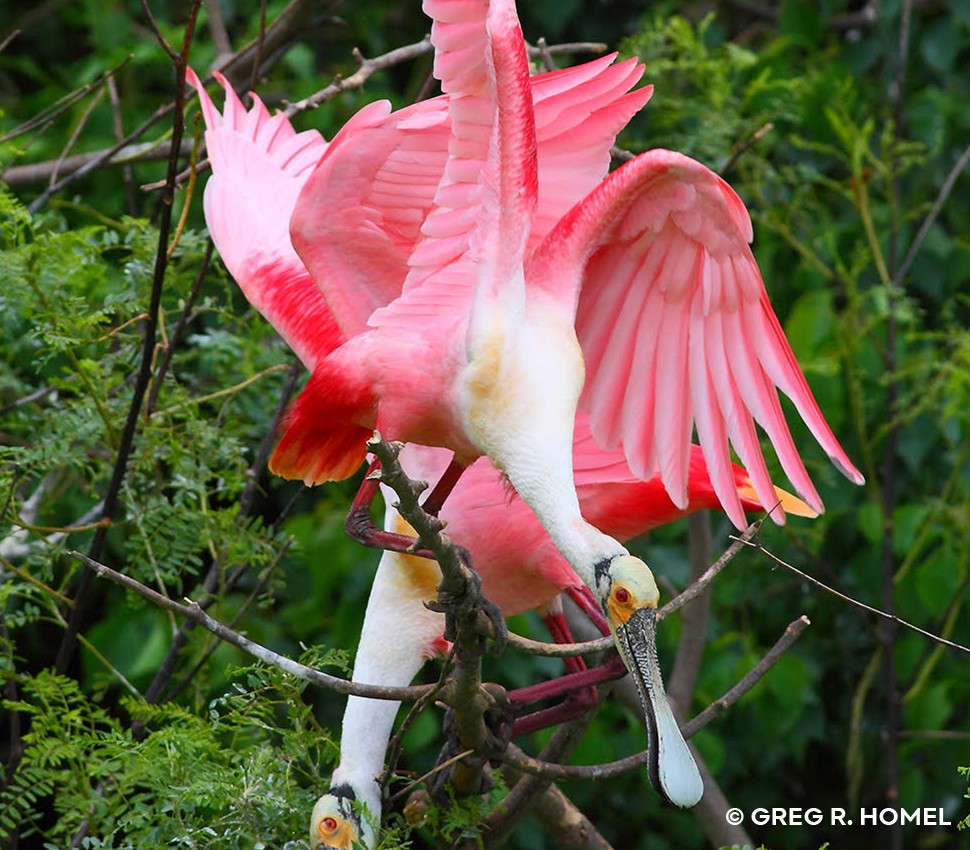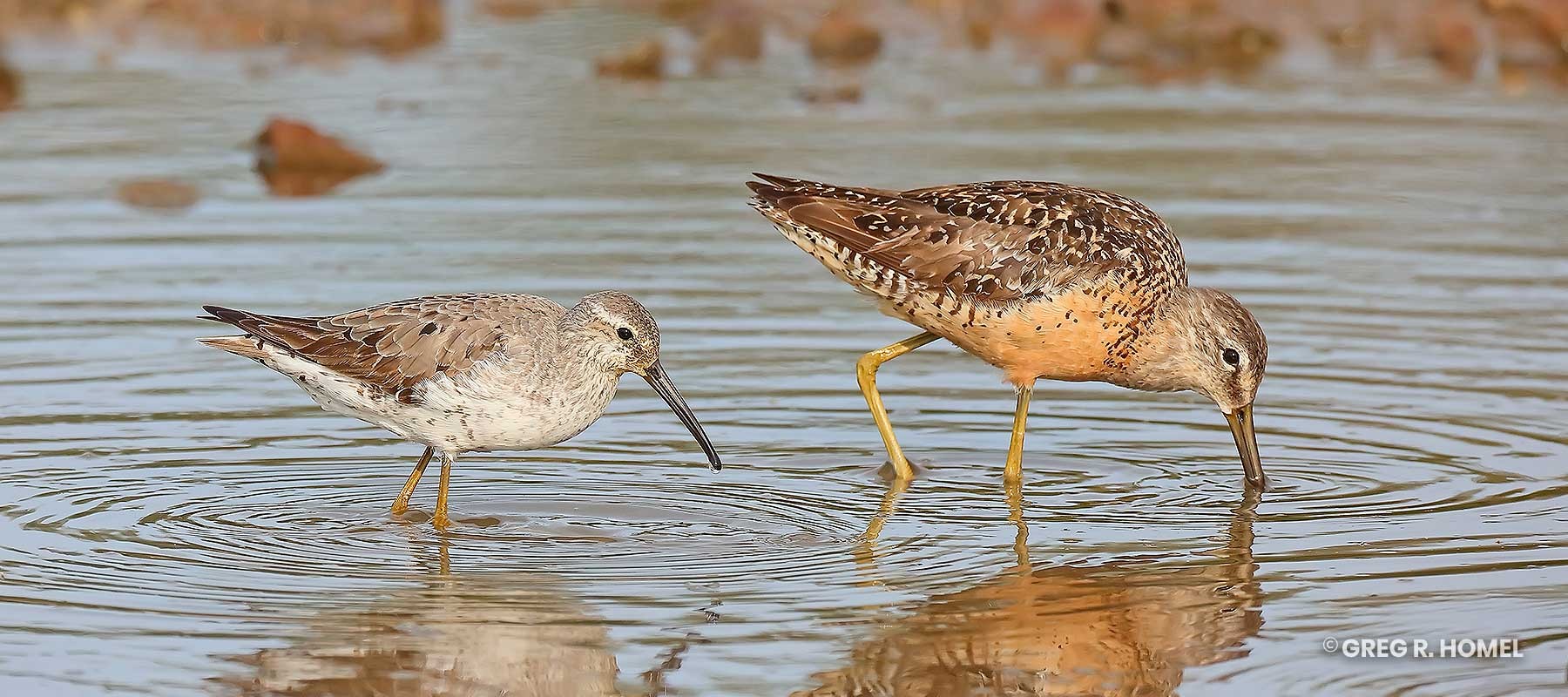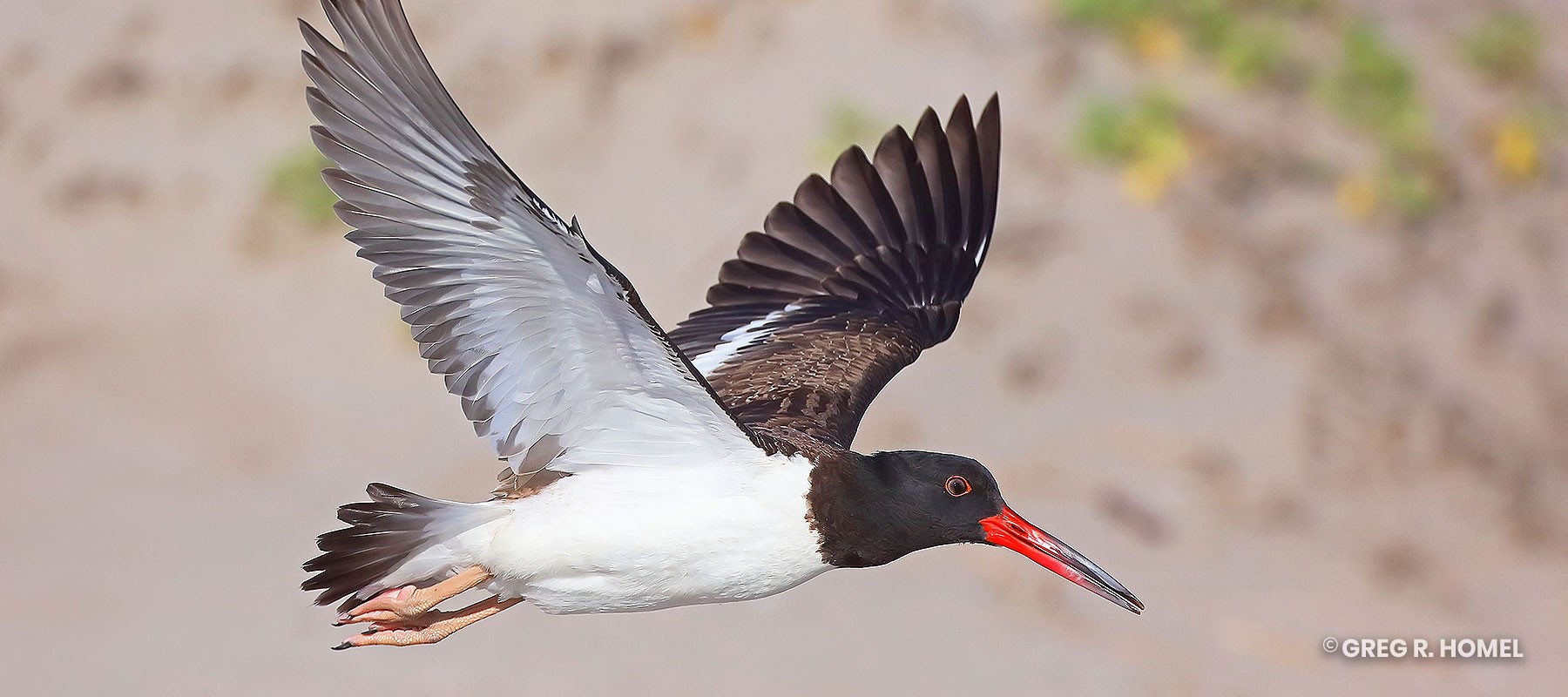One day with Military Macaws
Birds to Watch: 82
Location: Barra de Navidad » Jalisco
GPS: 19.20564 / -104.68209 ALT: 2611.5 ft
Carretara 200, Costera a Barra de Navidad Km 30, 48425 Jalisco.
Come along with Birding in Mexico for a hands on experience as you assist Mexican biologists with nidification (nesting) and life-history studies of Vallarta’s endangered Military Macaws. We will take to the pine-clad highlands of Cabo Corrientes to experience the primordial sights and sounds of wild Military Macaws, up close and personal—LITERALLY. You may be required to handle nestling Military Macaws, which is a magical experience, as you assist scientists working hard to stabilize their population and fill Vallarta’s skies with a recovered population of Military Macaws again.
Tour info
Survey from atop the reserve’s brand new 15 m / 49’ observation tower may also be required of volunteers like you. Join in the fun!
Don’t miss this once in a lifetime opportunity to enjoy a combination of birds, blooms and beauty less than an hour south of Puerto Vallarta, while viewing, photographing and possibly handling wild Military Macaws at their hitherto inaccessible nesting sites—now protected within the bounds of Rancho Santuario in Cabo Corrientes! See you there!
– Popularity of this tour: This is not a “tour” per-se, but rather an opportunity for hands on support and scientific observation while taking part in “conservation in action” where Vallarta’s endangered Military Macaws are concerned.
– Short description:
BIM participants will have the fortuitous opportunity to visit a private rancho turned grassroots conservation area for the endangered Military Macaw—the only one of its kind in the world—replete with both natural and artificial nesting boxes designed by Jorge Novoa of Las Juntas y Los Veranos Pueblo—nestled in the refreshing, pine-clad highlands of Cabo Corrientes.
Once we arrive at the parking area for the Sanctuary, we will be welcomed by the friendly warden, Francisco Espino, then, after enjoying some breakfast snacks and an orientation about your special duties today, we’ll set off on a 200 m walk on the Sanctuary’s well-maintained, gravely trail to reach a spectacular, new, 15 m / 49’ MACAW OBSERVATION TOWER and another 100 m further on, an amazing MACAW OBSERVATION BLIND overlooking half a dozen nest boxes.
The almost incomprehensible sight of several pairs of wild Military Macaws (in flight and perched in plain site) is the rule not the exception here! Have your cameras at the ready!
Unlike regular visitors—you’ll have a once in a lifetime opportunity to work with and assist Mexican biologists studying and monitoring the young macaw’s health and life history.
The prevailing habitat and elevation (617 m / 2025’) here is quite different from that of hot and sultry Puerto Vallarta. Enjoy the refreshing springtime climate and gentle breezes while birding among the pines and oaks, as you spend a day with the Military Macaws!
Other specialty highland birds present on the Sanctuary include resident Greater Pewee, Dusky-capped Flycatcher, Gray-collared Becard, Brown-backed Solitaire, Grace’s and Rufous-capped warblers; endemic Lilac-crowned Parrot, Colima Pygmy-Owl and Golden Vireo; in addition to migratory Painted Redstart, Black-throated Gray and Wilson’s warblers, etc., in season!
For a full list of birds recorded at the Military Macaw Sanctuary please press here
*Through your participation, Birding in Mexico will make a generous contribution to the Sanctuary, in keeping with our dedication to conservation through ecotourism.
Thank you for caring enough to make that contribution possible!
1-Private Pickup
6:30a.m. sharp in Puerto Vallarta!
Birding in Mexico (BIM) will cheerfully pick you up at either your hotel or a prearranged meeting point—usually the parking lot for Walmart / Sam’s Club off of Francisco Medina Ascencio—near the Liverpool Galleria across from the cruise ship terminal — then whisk you away to begin your wonderful birding adventure in paradise.
*Timings are approximate. Please be punctual. Casual window birding en route between each destination. We may vary the order of places visited during this itinerary, depending on seasonality, tips from our regional birding friends and exciting discoveries from recent BIM Rancho Sanctuario outings.
2-Driving time between Vallarta and Today’s BIM Hotspot—The Military Macaw Sanctuary / Rancho Sanctuario—with brief stops at Los Arcos National Park and the Canyon of the Rio Los Horcones en route (41 kms / 60 minutes)
6:30a.m.-7:30a.m.
After your private pickup utilizing a modern, high quality, air conditioned vehicle, we will follow coastal Highway #200 south from Vallarta, traveling through a beautiful array of still largely intact habitats. We transit extensive deciduous Sinaloan Thorn Forest in the coastal lowlands—where the highway borders the eastern tropical Pacific Ocean, passing by a small chain of islands known as Los Arcos National Park and Marine Reserve, where Brown Pelican, Magnificent Frigatebird, Blue-footed and Brown boobies, and Gray-breasted Martins may easily be seen—to reach Boca Tomatlan, located at the mouth of the Rio Los Horcones.
Prioritizing biologist’s work with the macaws, we will take the time to stop and scan for these and other interesting birds in the morning or on our way back this afternoon.
From Boca Tomatlan, the highway turns inland and ascends the dramatic canyon of the Rio Los Horcones, grading from thorn forest to montane tropical forest and finally encinal (pine-oak woodland).
During our early morning drive through the gorge of the Rio Los Horcones, we can safely pull aside at a strategic turnoff to look for a haze of White-collared Swifts swirling above the highway in the crepuscular twilight, as our transit coincides with their early a.m. activities as they leave their roost site deep in the canyon each morning.
Military Macaws and Lilac-crowned Parrots are also possible overhead sights while driving this route, so we will listen for and keep an eye out for their silhouettes in the sky while scanning for swifts as we ascend the grade.
This river is one of the only unobstructed, still naturally flowing rivers remaining locally—though this status is now threatened by a planned dam. The small community of Las Juntas y Los Veranos sits atop this canyon and the Vallarta Botanic Garden lies a few kilometers beyond.
Rancho Sanctuario is 10 kms farther beyond the Garden, and is nestled 5 kilometers to the southwest of the paved highway in the still wild highlands of Cabo Corrientes, as accessed by an unpaved but drivable mountain track. Getting there is half the adventure!
3-One Full Day with the Military Macaws at The Military Macaw Sanctuary / Rancho Santuario
7:30a.m.-4:00p.m
Complimentary breakfast snacks will be provided upon arrival to boost your energy levels before setting out on the trail to reach the new Macaw Observation Tower. Restrooms are available, as well.
Usually our “continental breakfast” consists of yogurt, fruit, juices, granola bars and other nutritious options. Cold, bottled fresh water and a selection of soft drinks—including diet alternatives—are also readily on tap. Supplies are limited. We apologize if your preferred flavor is not available.
Following continental breakfast we will bird our way to the new Macaw Observation Tower (200 m approximately) then continue toward the spacious observation blind / viewing-platform overlooking half a dozen seasonally occupied Military Macaw nest boxes!
Our priority will be to observe and photograph the majestic macaws, while assisting dedicated Mexican biologists, while also keeping an eye out for other highland birds here.
To see a full list of the birding possibilities, please press here
Restrooms are available on site at Rancho Sanctuario, both near the parking area and adjacent to the 15 m / 49’ observation blind.
*Approximate total trail walking distance may vary but is generally less than 1 kilometer, and walking ranges from easy to difficult, depending on which nest sites have to be accessed. The pace is relaxed, however.
Please inquire for dates and further specifics if you want to participate in the next hands-on Military Macaw biological study.
Bird Watch List
** The number of birds per trip may change
To better prepare for the adventure that awaits you, please study the following lists:
Some of the region’s star birds, stratified below according to habitats, endemism and seasonality:
1. Military Macaw Sanctuary at Rancho Sanctuario: a Resident Neotropical Species: White-tipped Dove; Squirrel Cuckoo; Common Black and Gray hawks; Elegant Trogon; Russet-crowned Motmot; Orange-fronted Parakeet and Military Macaw; Ivory-billed Woodpecker; Masked Tityra, Gray-collared and Rose-throated becards; Northern Beardless Tyrannulet, Greenish Elaenia, Greater Pewee, Bright-rumped Attila, Dusky-capped Flycatcher, Great Kiskadee, Boat-billed Flycatcher and Thick-billed Kingbird; Green Jay; Brown-backed Solitaire and White-throated Thrush; Scrub (Goldman’s) Euphonia; Yellow-winged Cacique and Streak-backed Oriole; Grace’s and Rufous-capped warblers; and Yellow Grosbeak, etc.
b. Mexican Endemics: West Mexican Chachalaca; Lilac-crowned Parrot; Colima Pygmy-Owl; Golden Vireo; San Blas Jay; Happy Wren; , etc.
c. Migratory species, winter: Pacific-slope Flycatcher; Blue-gray Gnatcatcher; Black-and-White, Nashville, Yellow-rumped (Audubon’s), Yellow-throated, Black-throated Gray, and Wilson’s warblers and Painted Redstart; Summer Tanager, etc.
d. Miscellaneous species of interest: Common Raven.
1. Rancho El Santuario (81 species):—https://ebird.org/printableList?regionCode=L8782744&yr=all&m=
Recommended footwear for today’s excursion?
All-terrain shoes with ankle support are generally recommended for today’s outing; tennis shoes are also acceptable—especially in the lowlands—if you do not have high-top footwear. We highly recommend the former due to possibly rough, rutted, rocky or slippery (fine gravel on the 300 m trail between the parking area and Military Macaw blind and viewpoint on the sanctuary) surfaces we may encounter while away from the vehicle. Walking conditions may vary, and are dependent on recent weather conditions.
What kind and Color of Clothes should I Wear?
Lightweight clothing—especially light weight slacks—with neutral or earth tone colors (no bright colors or whites please, as they may alert the area’s shy, sharp-eyed birds to our presence, who they may fly away prematurely without giving us reasonably close or prolonged looks, which would be a shame). Short sleeve shirts are fine.
Please also don a hat or cap with a visor or brim (again, no bright colors or whites), to avoid glare, water reflections and sunburn.
We discourage your wearing of shorts, skirts, bathing attire, or cutoff shirts that expose the mid-rift while on hikes or other outings due to the possible presence of biting insects and to avoid injuries if you stumble.
Weather—especially during the summer Monsoon season—is variable according to altitude. We may visit varying habitats and elevations on this excursion, up to 617 m / 2025’ at Rancho Sanctuario.
Tropical weather is unpredictable at best, so be prepared for any contingency, knowing that at any time of year the weather can turn surprisingly wicked. Please carry a light duty windbreaker and a fleece to provide comfort during a sudden downpour, and warmth during our mornings at altitude, especially during the summer monsoon season. Cold fog may occur at the Military Macaw Sanctuary, as well, which is another reason to bring a light weight fleece with you on this excursion. Better safe than sorry!
Sun Protection?
YES. Puerto Vallarta, its beaches and surrounding highlands are famous for their clear skies and sunny conditions. This is the “tropical sun” however, so those unaccustomed, beware! We will often be exposed to direct sunlight throughout most of the trip, except while riding in the vehicle, viewing the macaws from a special blind / viewing station.
We recommended using sun screen with a minimum Sun Protection Factor of 30 (preferably 50 SPF or higher for lighter complexions) on your face and other exposed skin surfaces to avoiding sunburns, especially in the coastal environments we will be visiting by foot or vehicle.
Insect Repellent?
YES. Jejenes or “no-see-ums” are a possibility during still mornings, especially during the wet season, but mosquitos are not too much of a problem during the dry season (November-May).
Insect repellents containing DEET will vastly improve your outdoor comfort on this expedition.
Biting insects can seem almost absent on most of our regional expeditions, and for most of the daylight hours, but can appear unexpectedly, so be prepared by arming yourself with both knowledge and technology.
To be sure to avoid being bitten by black flies (i.e., “Jejenes” or “No-See-Ums”) or Mosquitoes, we recommended that you carry repellent with DEET as its active ingredient, applying it liberally on an impromptu basis to counter these blood suckers, while spraying your pant cuffs and socks for chiggers before every outing, regardless of the season.
You’ll be glad you did, especially during the wet season (June-October)!
Where chiggers are concerned—chiggers like and are spread by livestock—and livestock may be present in our area of coverage. You may not even realize you’ve been bitten until 12-24 hours after exposure if you do not preempt by spraying your socks, shoes and pant cuffs; if you don’t and you are bitten (painless and unseen at first) it will be too late and the resultant delayed itching can be formidable.
Thankfully, chiggers are harmless and it’s easy to avoid chigger bites by applying repellents containing DEET, and spraying them liberally, as suggested, onto your pant cuffs, socks and shoes before every outing, regardless of the season.
We recommend a repellent that is sprayable via a non-aerosol propellent, since the pump style repellents may leak inside your daypack, potentially ruining your food, camera gear, or other often expensive equipment carried. Roll-on-style repellents do not efficiently cover your skin’s surface, nor your pant cuffs or socks, so you are discouraged from using them in favor of a propelled spray.
Bring your Camera Gear and Binoculars
It is assumed you have your own binoculars, as this is requisite to fully enjoy our outings!
If you are also an avid bird and / or wildlife photographer, BIM offers select Bird Photography Expeditions with world renowned photographer, writer, lecturer and bird tour leader Greg R. Homel, throughout Mexico… and the world, for that matter.
Please inquire if you are interested in learning more about our bird and wildlife photography-oriented expeditions, or take a look at our website.
Our day trips—unless otherwise specified as bird photography-centric—are focused on birding specifically, and photography as an exciting sidebar. This trip, however, is unique in so many aspects that it would be remiss not to have your camera on hand.
It goes without saying that once in a lifetime opportunities exist to photograph wild Military Macaws—in flight and perched or at their nest sites—at remarkably close range, and sometimes in hand! So bring your cameras if you have one!
All tour participants should consider themselves encouraged to bring their cameras and practice this enjoyable pastime during any excursion.
Recommended equipment should include digital cameras with telephoto lenses equal to the equivalent of at least 400 mm or greater (in 35 mm terms) for your bird photography efforts to be worthwhile in the first place. Bird photography tours aside, tripods are not recommended, since it’s reasonable to assume they may interfere with other participants’ freedom of mobility and our logistics.
Most modern lenses and many of today’s cameras are equipped with motion countering technology, anyway, making a tripod unnecessary under the conditions we will be operating within.
Please don’t forget to bring extra batteries and memory cards specific to your camera brand, as well.
Lens tissue should also be considered requisite to keep your lenses clean or to wipe incidental water or sea spray off of their (and your binoculars’) objective elements, as environmental conditions are unpredictable in the often wild regions we will be visiting. If you do not have “lens cleaning tissues,” don’t fret—in a pinch normal, one ply, unscented, napkins or toilet paper will work just as well as expensive lens tissue.
*Please inquire about loaner binoculars if you or one of your party does not have binoculars but would like to partake in this excursion. We may have one or two available, free of charge, to lend you. Apologies in advance if the loan binoculars are already claimed or unavailable for this tour.
What is this Expedition’s Level of Physical Difficulty?
Walking conditions here range from EASY (primarily) to MODERATE throughout the excursion.
Visitors on this unique excursion will generally encounter easily negotiable trails and foot paths at The Military Macaw Sanctuary (some, steep with ruts, gravel or rocky stretches, wet or muddy conditions, depending on recent weather), but fit participants may be required to go off trail and to bushwhack with Mexican biologists accessing remote nesting sites.
You should be prepared for any contingency with good cheer and a spirit of adventure, while being aware that if you have to answer the call of nature when we are far from facilities, you may be relegated to using what we affectionately call the “green latrine.”
Trails at the wild, Military Macaw Sanctuary are not wheelchair accessible, unfortunately.
*Please inquire with us as to the potentialities for handicapped participants.
If possible, we tend to adjust our walking pace to match the physical capabilities of each group.
In the event that two leaders will accompany your group (which is not guaranteed), it is possible that we will split the group to accommodate clients of varying athletic capabilities.
If you have specific concerns, please don’t hesitate to contact us in advance of your trip and we will do our best to provide you with accurate information pertinent to your specific needs, while advising you whether or not you would gain commensurately from the excursion you are contemplating.
What is Included on my Tour?
- • All Birding in Mexico excursions include one or more specialized, Government-certified (applicable to Alejandro Martinez, a Mexican Citizen, or other Mexican guides), bilingual guide(s)
- • Your guide(s) will carry their own private binoculars at all times during the tour, and where productive, a high quality spotting scope, as well
- • Complimentary Birding in Mexico checklists specific to the region will be handed out at your pickup point and an excellent regional field guide authored by Greg R. Homel will be offered for sale
- • Breakfast-snacks are included
- • Throughout this tour, all Rancho Sanctuario and other entrance fees, complimentary snacks, fruit, purified water, and soft drinks are provided with pleasure, as is lunch, if specified in the itinerary
- • Private ground transportation with pickup and drop-off between Puerto Vallarta and all birding destinations is also included
- • For your safety and wellbeing a First aid kit is carried on all Birding in Mexico excursions
- • If you are not a Mexican Citizen, please carry a valid copy of or your actual Passport (or Passport Card) on all Birding in Mexico excursions, since occasional government or military “Puestos” (road checks) may be encountered and require this.
- Mexican Citizens should have a valid government-issued identification with them, as well
- Also it is wise to bring sufficient cash and your ATM card (please know your PIN), to cover unexpected expenses in the event of an emergency

